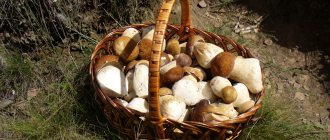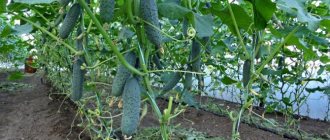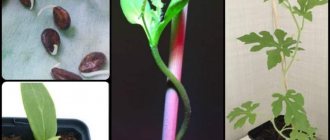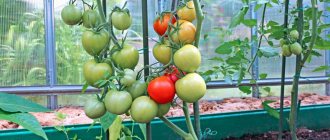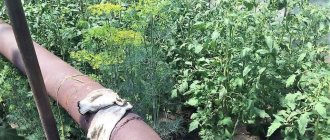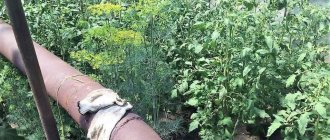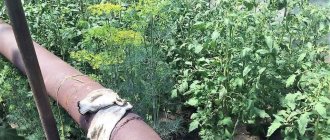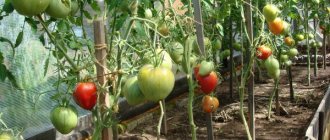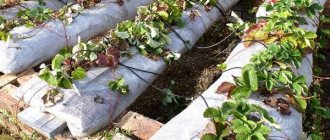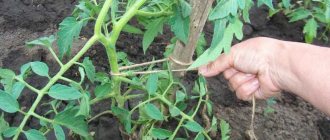Lovers of quiet hunting are accustomed to picking mushrooms among fir trees and birches, in forest clearings and sunny edges. But weather conditions are not always favorable for mushroom pickers, and sometimes they return home with half-empty baskets and a spoiled mood. How to grow mushrooms at home?
Connoisseurs and experts in growing mushrooms under artificial conditions suggest not wasting time and effort on fruitless searches, but rather start growing your favorite porcini mushrooms in your backyard or in a secluded corner of your apartment.
How to properly grow mushrooms at home step by step
At home, it’s good to practice not only boletus mushrooms. Work on growing champignons, oyster mushrooms, honey mushrooms, Japanese shiitake mushrooms, and chanterelles will be successful. First, you need to calculate the costs and decide what types of mushrooms you have the desire and ability to deal with.
If you grow mycelium (fungal spores) yourself, there is a risk of not being able to cope with this stage of the work. In order to obtain high-quality mycelium, absolutely sterile conditions must be created, and this is not always possible at home.
The solution is to use various ready-made combinations of dry grain or dung mycelium, which, after reading the instructions, is quite easy to work with.
In addition, it is necessary to prepare the soil substrate, decide which boxes or bags it will be in, how and in what rooms to place these containers.
Measures should be taken to create artificial optimal climatic conditions. When growing mushrooms in garden beds, concerns about light, temperature, humidity and air ventilation practically disappear, but the soil and wood structures, such as stumps for honey mushrooms, are still prepared in advance.
When growing mushrooms in rooms with windows, the glass must be whitened to prevent exposure to bright sunlight.
If there is absolutely no access to natural light in the room, then it is necessary to install fluorescent lamps that emit a red-blue spectrum corresponding to low street lighting. They are used in the daytime during the period when the fruiting bodies emerge from the substrate fungal block.
Mushroom growing technology for beginners
How to grow mushrooms at home. The technological process begins with the preparation of premises, soil substrate or compost.
Then they buy or grow their own mycelium, which is planted in the substrate.
The last stage is the process of cultivation itself, that is, growing mushrooms.
Growing champignons at home
Growing any mushrooms in an apartment can provoke asthma and other pulmonary diseases, because the spores are strong allergens and, when ripe, are spread throughout the room. In extreme cases, you can work with mushrooms on a loggia or balcony, but it is best in a separate building or basement.
The size of the harvest of champignons grown at home will depend on the air humidity in the room (up to 70%) and on the quality of the soil substrate .
It takes several weeks to prepare. Enclosed spaces are not used in this case, because poisoning may occur from the gases released during fermentation of the substrate components. The substrate is produced by composting straw and manure with the addition of fertilizers and soil deoxidizers.
Preparing compost for growing champignons (video)
Room for growing mushrooms
How to grow mushrooms at home. The ideal place for growing mushrooms should be a dirt-free, ventilated room with the ability to regulate humidity and temperature.
Professionals usually use not one, but two rooms - a chamber for the incubation period of the mycelium, and rooms where mushroom blocks are moved with the beginning of germination of fruiting bodies.
This is due to the fact that the initial stage should take place in the dark and at a temperature of +25°C.
And for the final stage, periodic illumination and a decrease in temperature to +16°C are required. Humidity should always be kept high and should not fall below 65%.
Improperly organized ventilation will lead to the accumulation of moisture and carbon dioxide near the places where mushrooms sprout. As a result, the fruiting bodies may die or, at best, become deformed.
Compost
In order to create a mycelium measuring 2.5-3 m², you need about 300 kg of a mixture consisting of 100 kg of dry straw, 2 kg of carbamide (urea), 2 kg of superphosphate, chalk and gypsum for a total of no more than 15 kg, and the rest must be manure, horse or cow.
The straw, pre-soaked for 24 hours, is laid out in layers, which are sprinkled with fertilizers, manure, chalk and gypsum. Each layer is additionally moistened, using at least 300 liters of water, and mixed. The mixture is turned over several more times and placed in a pile with a height of about 1.5 m and a width of 1.2 m. Fermentation of the components will begin inside it, releasing heat. The compost will be ready for use no earlier than three weeks later. During this period, it needs to be stirred once a week.
Planting mycelium
Mycelium for growing champignons is planted in compost heated to +26 °C. At a temperature lower than just two degrees, the survival rate of the mycelium sharply decreases; if it is higher, it will die.
The mycelium grown in manure is taken out of the jars and crushed into pieces weighing 15-20 g. They are planted in pre-made recesses or grooves 5 cm deep, staggered at a distance of 20 cm from each other. Gradually the mycelium will grow and fill the entire space.
The laid pieces of mycelium are covered with moistened compost on top and lightly compacted. Some mushroom growers, when planting mycelium, lift the compost with pegs and place planting material in the gap. The grain mycelium is mixed with the compost substrate, and compost without mycelium up to 5 cm thick is sprinkled on top.
The soil for growing mushrooms can be laid out on the floor of the room in the form of ridges, or on racks located one above the other. The gap between the floors of the racks is up to 30 cm, the width of the racks is up to 1.5 m.
Caring for a mushroom plantation
How to grow mushrooms at home. In the first 12 days after planting, the temperature of the mycelium should be the same as at the time of planting - from +24 to +26°C. At further stages of mushroom cultivation, the temperature should be maintained in the range of +18 to +20°C.
After checking the mycelium for survival, that is, for the appearance of long white threads or spots, loose turf soil mixed with peat or sandstone is poured onto its surface in a layer of 3-4 cm.
The room where mushrooms grow must be ventilated daily to remove accumulated carbon dioxide. Enter closed greenhouses before they are ventilated wearing masks or respirators.
Without the support of high air humidity and moderate compost, the mycelium will dry out and stop growing. Mushroom beds should also not be flooded to avoid the formation of mold, which can lead to the death of the mycelium.
Mushroom caviar from boiled mushrooms: the most delicious recipe
Koltsevik
It is grown in a greenhouse. Optimal temperature is from +10 to +30°C. When planted in May, the harvest is harvested in late summer.
Recent Entries
Lilac perennials that are beautiful, compact and do not crowd out other plants Why when buying seedlings you should not take the sellers’ word for it and how to determine the age of the plant using 3 signs Tomato seedlings have turned purple or whitish: why the color has changed and how to save the plants
For a plot of 1 m2 you will need 25 kg of hay. It needs to be moisturized abundantly for 5-7 days. Then form beds 25 cm high. At a depth of 7-9 cm, lay out pieces of mycelium at the rate of 120-150 g per 1 m2. Place covering material on top and water the plantings through it.
After a month, the shelter is removed, and soil is poured on top of the hay in a 5 cm layer. You need to water regularly, avoiding drying out and waterlogging of the soil.
How to grow oyster mushrooms at home
Oyster mushrooms are naturally found on the trunks or rotten stumps of dried deciduous trees. Under artificial cultivation conditions, it is bred on a substrate of straw, reeds, sunflower husks, and sawdust. The substrate and mycelium of oyster mushrooms are alternately laid out in bags or bags in layers until the full capacity of the container.
Bags and packages with contents are pierced in several places with an awl at a distance of at least 20 cm from each other. Several punctures are made in the corners of the bottom of the bag to remove liquid.
Bags with mycelium are placed in a dark room with an air temperature of 18 to 25°C. After two weeks, the mycelium should grow, in which case the substrate should turn white.
The mycelium will ripen at this temperature for another week. Then the air needs to be cooled to 5°C. By this time, the first fruiting bodies of the mushrooms will begin to appear through the slits in the bags.
During this growing phase, dim lighting is turned on for 12 hours during the day.
Growing oyster mushrooms (video)
Polypores
These are parasitic fungi that eventually lead to the death of the tree. Or growing directly on fallen, dead trunks. It is impossible to grow tinder fungi at home.
Only in laboratory conditions is it possible to maintain the required environment. For many years, scientists have been trying to solve the problem of cultivating polypores, since they are actively used in the pharmaceutical industry. But to no avail.
How to grow honey mushrooms at home
Honey mushroom is very popular among summer residents. They practice its cultivation on logs and stumps, in greenhouse conditions, and in basements.
At home, they are grown in jars. Banks are placed on balconies or window sills.
Before starting to work with honey mushroom mycelium, the jars must be sterilized. The substrate consists of sawdust from larch trees (three parts) and bran (one part). The mixture is poured with boiling water for one day, then allowed to cool and squeezed and compacted with hands wearing sterile gloves.
The substrate is placed at the bottom of the jar, keeping it clean and sterile, a depression is made and the mycelium is placed in it. Sprinkle the substrate on top, in a 3 cm layer. The jar, closed with a lid with holes, is taken out to a dark place. The air temperature should not fall below 22-25 °C. To maintain humidity inside the jar, cover it with damp gauze or cotton wool. Make sure that the cotton wool or gauze does not dry out.
The first honey mushrooms should appear in a month and a half. Mushrooms should no longer grow in the dark, but in a shaded place. To avoid interference with mushroom growth, remove the lid. Make sure that the mycelium does not dry out and periodically spray it with water.
How to pickle mushrooms for the winter in jars
Growing shiitake mushrooms at home
How to grow mushrooms at home. For shiitake mushrooms, fresh stumps 1.5 m long of oak, chestnut, and beech are used. On stumps, the bark should be intact, the wood under the bark should be moist. To maintain humidity, the shiitake growing area should be in the shade. Seeding with mycelium can continue until the wood dries out, 1 to 3 months.
The mycelium mixed with the substrate is pushed into holes drilled with a drill pre-treated with alcohol. Then the holes are closed with wooden pegs, like corks, and sealed with paraffin. The stumps with embedded mycelium are tightly connected to each other in the form of a standing woodpile. Cover the woodpile with film. Store at 20-26 °C, if conditions allow, outdoors in the shade, or indoors. The development of the mycelium lasts from half a year to 18 months.
After the mycelium grows, the stumps are shed abundantly and for a long time with water. Fruiting on the same stumps can occur several times.
Growing shiitake mushrooms on stumps (video)
Growing shiitake in the basement (photo)
How to grow porcini mushroom near your home
Mushroom pickers often pick overripe porcini mushrooms in the forest. Some people make their own liquid seed spore material from these mushrooms, and then water the ground with it in secluded places in their garden plot with suitable soil.
Mushrooms are chopped either using a knife or passing through a meat grinder. Mushroom mince is placed at the bottom of a trimmed 5-liter plastic bottle and filled with 4 liters of spring water at room temperature. Add 50 g of live baker's yeast, cover loosely with several layers of gauze and leave for 2 weeks in a warm, unlit place. 100 g of the resulting mixture is diluted with 2 liters of settled water and poured over the area. If the soil is not suitable, then it is prepared, bringing the composition as close as possible to the soil where the mushrooms were picked.
The first signs of mycelium growth will appear in a few months, and the first mushrooms will appear in a year and a half.
How to grow porcini mushrooms in your garden (video)
Selection of location
The location for the mushroom plot depends on the selected crop. It is desirable that it corresponds to the microclimate that its future inhabitants prefer in nature.
| Variety | Comfortable natural conditions | Trees are favorite symbionts and donors |
| Soil crops | ||
| Boletus | Open or in slightly dark areas with slightly moist, moss-covered soil. | Oak, birch, spruce and pine. |
| Chanterelles | Brysses under the tree crowns. | Oak, birch, alder, spruce and pine. |
| Tree crops | ||
| Oyster mushrooms | Shaded, damp places. | Linden, poplar, willow and aspen. |
| Honey mushrooms | Meadows, forest clearings, ravines and damp hollows. | Alder, hazel, birch, aspen, oak. |
When arranging a plot with champignons, it is necessary to select moist, dark, sheltered areas from the sun for these mushrooms in the garden. This crop is indifferent to the presence of specific tree species nearby.
Champignons in natural conditions usually grow near farmland because they love well-manured soil.
To grow forest mushrooms in a personal plot, you will need to recreate conditions similar to those in your native meadow. Therefore, it is better to choose for breeding those crops that settle in the forest zones of your region.
How to grow chanterelles
The difference between growing chanterelles and porcini mushrooms near the house is that the spores are not shed on any areas with prepared soil, but only on areas near the same tree near which the mushroom was found.
If you use purchased mycelium, you can try to plant it under coniferous, fruit trees and shrubs, even in raspberries.
The main thing is that the trees are at least 5 years old. The myceliums of chanterelles do not freeze, but they still need to be covered with fallen leaves or straw. Mushrooms are planted from early spring until late autumn.
Cucumbers on the balcony: growing in plastic bottles
Harvesting
The timing and cyclicity of mushroom growth vary depending on their type:
- The first boletus and chanterelles appear from the soil after 14–25 days. The fruiting period is 40–45 days with a frequency of 10–12 days.
- Oyster mushrooms appear a month after planting. Moreover, the next batch ripens faster - after two to three weeks. This way you can get four harvests.
- Champignons ripen two months after planting and produce up to seven harvests.
- Honey mushrooms need one and a half months to ripen. One colony bears fruit five to six times.
Most mushrooms are harvested when they have reached the size desired by the owner. The fungi are carefully twisted out of the soil, and the holes from them are filled with soil and moistened. A new mushroom body will appear in this area.
Only champignons have deadlines for harvesting. They must be removed before the inside of the cap darkens. After this, the mushrooms become inedible and must be cut off and disposed of. Ideally, harvesting should take place until the film between the stem and cap of the champignon breaks.
The volume of the harvest also depends on the growing method and crop. The average is 10 kg per square meter. It is best to cook the collected mushrooms immediately or make rolls, since the fruiting bodies quickly deteriorate.
But the benefits of growing mushrooms on the plot are not only food. In gardens with mushroom glades, trees and berry gardens are not susceptible to disease, and young seedlings begin to bear fruit faster. Even demanding remontant varieties of strawberries in such conditions do not need to renew the plantation every four years.
If appropriate conditions are created, then cultivated plants do not even grow additional feeding roots, and the external fungal root system, mycorrhiza, is used for feeding.
This system for garden plants is also attractive because it is perennial and, in addition to nutrition and water, provides valuable enzymes, hormones, immunostimulants, and even helps support a kind of information connection between trees.
Growing mushrooms in plastic bags
When growing mushrooms using bag-bag technology, the problem of the spread of diseases and molds is eliminated, because there is a barrier made of propylene or polyethylene between the mushrooms. The mushrooms additionally receive carbon dioxide, which is well retained by the film, and the soil substrate is easier to maintain moist.
Polymer containers are much cheaper than containers, easy to use and easy to recycle. The transparency of the film allows you to observe the development of the mycelium. The shape of the bags can be cylindrical or cubic, which allows them to be placed in a way that is convenient for the manufacturer and saves space in the room reserved for mushroom propagation.
What is a mushroom farm?
A mushroom farm is an effective tool for growing mushrooms that come in a wide variety of varieties. These can be small cardboard boxes, or huge rooms in which hundreds of kilograms of champignons, oyster mushrooms or other mushrooms that are in market demand are grown.
There are several growing methods:
- On the beds. This is an economical method that requires film and compost. The downside is that it depends on the season.
- In bags. Substrate is poured into them, holes are made and hung.
- In briquettes. A modern method in which the mixture is pressed into briquettes. Plus, it makes maintenance easier.
- In containers. This is an American technology in which soil with mycelium is placed in plastic or wooden containers that have been pre-treated against mold.
It is believed that a mushroom farm with potential for development should occupy an area of at least 1 sq.m. Smaller scales also allow you to make a profit, but they do not provide any special opportunities for business growth. It is possible to grow mushrooms for yourself - this allows you to save your budget on purchasing mushroom products.
Growing mushrooms in the basement
How to grow mushrooms at home. In the absence of special above-ground premises, mushroom lovers grow them in basements, where they create optimal conditions so as not to lose the harvest.
The main advantage of such places for growing mushrooms is that when using them, the material costs of maintaining low temperatures are reduced, and the humidity in them is usually high. But most likely it will be necessary to carry out work related to ventilation of the basement. The cultivation technology is not much different from the processes in ground-based premises.
Amateurs and professionals who grow mushrooms, despite great efforts, still receive material benefits from their work. The main thing is to observe all the necessary conditions and cleanliness so that instead of mushrooms you do not end up with dried mycelium.
Reviews
Grigory 45 years old, Rostov
I really liked the method of growing porcini mushrooms and chanterelles on my plot. It’s not particularly clear through which attachment the mushrooms are rolled into the meat grinder, probably with large holes. I will definitely collect forest soil and water it with mushroom spores.
Stepan 50 years old, St. Petersburg
When growing mushrooms on stumps or logs, do not forget about snails; they destroy the mycelium before you know it.
Elena 43 years old, Volgograd
I would like to clarify that growing oyster mushrooms on sunflower husks is quite an interesting option. When buying mushrooms at the market, I saw that the husks were stuck to them. And the mushrooms tasted very good.
Natalya 32 years old, Chelyabinsk
Be sure to try planting mushrooms in a flower pot or bucket at home! The result will please you!
Sanitary requirements for products, GOST
Mushrooms intended for human consumption are subject to declaration for compliance of product quality with GOST requirements. The rules and declaration schemes are regulated by the Regulations of the Customs Union TR CU 021-2011. On a voluntary basis, you can obtain a certificate for products after conducting laboratory tests in an accredited organization. In this case, not only the manufacturer (declarant), but also the certifying body is responsible for the quality of the product. A declaration and certificate are required when supplying products to catering establishments or retail chains.
Basic documents establishing requirements for the quality of mushrooms:
- GOST 56827-2015 - fresh champignons;
- GOST 56636-2015 - cultivated oyster mushrooms;
- GOST 28322-2014 - mushroom processing products;
- GOST R 55465-2013 - frozen products;
- GOST 33318-2015 - dried mushrooms.
The declaration is drawn up by the product manufacturer or importer. To obtain it, it is necessary to conduct a product study in your own or independent laboratory and submit a protocol to the certifying authority. The declaration can only be obtained by individual entrepreneurs and organizations registered in the territory of the countries of the Customs Union.
Growing champignons as a business idea (video)
All edible mushrooms have unique aromatic and taste properties. They contain a huge amount of nutrients, fiber and vegetable proteins. Mushroom dishes are irreplaceable for anyone who follows a healthy diet or fasts. Therefore, the topic of growing mushrooms at home is more relevant than ever. Nothing is impossible! Try it, and you will definitely succeed!
Health to you and your loved ones! Natalya Belokopytova
